#Algonquin
Text
The Wend*go is Not Your Cryptid
I'm Algonquin/Ojibwe and this is a spirit that comes from our teachings.
As a young child, the elders taught me to never even SPEAK its name, to not even sing its songs. When we sang a song about it during drumming group one year, we all got in trouble.
You do not spell the word or speak the word.
It's NOT a "cryptid" or a "spooky story" for white people to appropriate.
Its bearly spoken about in our own communities, and even then, only very carefully.
Again, not because its "creepy" but because its respected and something in our traditions that is not played around with; so its certainly not for non-ojibwe/algonquin people to speak about whatsoever. Period.
10K notes
·
View notes
Text


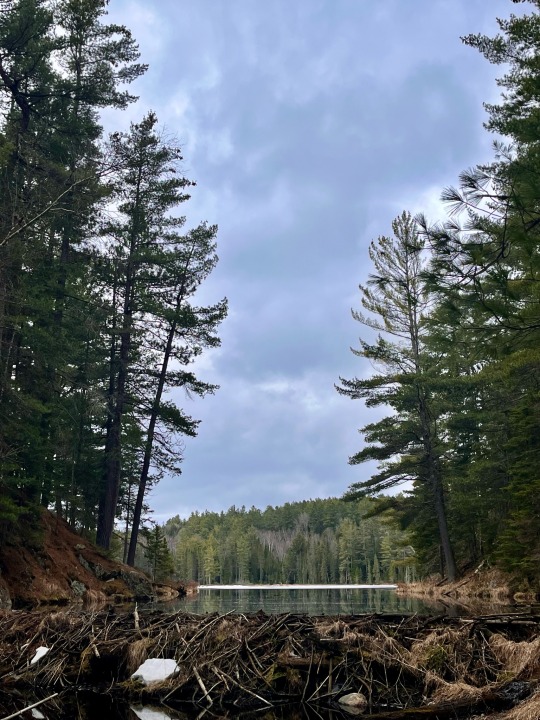



Lots of hiking today ✨
12 notes
·
View notes
Text
The thunderbird is a legendary creature in particular North American indigenous peoples' history and culture. It is considered a supernatural being of power and strength.
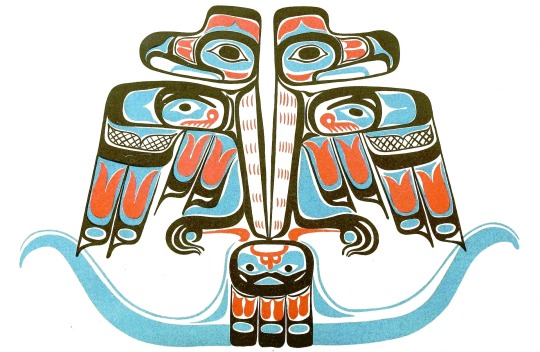
It is especially important and frequently depicted in the art, songs, and oral histories of many Pacific Northwest Coast cultures, but is also found in various forms among some peoples of the American Southwest, East Coast of the United States, Great Lakes, and Great Plains. In modern times it has achieved notoriety as a purported cryptid, similar to creatures such as Bigfoot and the Loch Ness Monster.
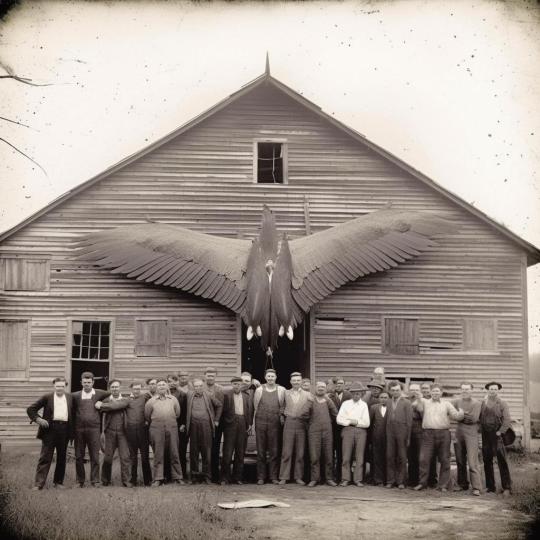
The thunderbird is said to create thunder by flapping its wings (Algonquian), and lightning by flashing its eyes (Algonquian, Iroquois).

In Algonquian images, an X-shaped thunderbird is often used to depict the thunderbird with its wings alongside its body and the head facing forwards instead of in profile.

The depiction may be stylized and simplified. A headless X-shaped thunderbird was found on an Ojibwe midewiwin disc dating to 1250–1400 CE. In an 18th-century manuscript (a "daybook" ledger) written by the namesake grandson of Governor Matthew Mayhew, the thunderbird pictograms varies from "recognizable birds to simply an incised X".
28 notes
·
View notes
Text
In Cinderella Tales From Around the World, I've now read all the tales from the United States and Canada. Most of these variants are Native American; some scholars think the archetype of Cinderella spread to these tribes from French Canadian settlers, but the indigenous people made it their own. There are also some US and Canadian variants from non-indigenous sources, which the book follows with two similar versions from the West Indies.
*The first Native American variant in this book is an Ojibwe version. The heroine is abused by her stepmother and two stepsisters, but a manitou (spirit) gives her fine clothes and a magical box in which to secretly store them. Some time later, the stepmother sends her to fetch water, and along the way the girl meets her grandmother, who warns her that she'll hear music, but not to look back in its direction – if she succeeds in not looking back, she'll become more beautiful than ever. She does, so one of the stepsisters sets out to the same place to gain new beauty too, but she ignores the grandmother's warning, looks back, and turns ugly. Some time after this, a dance takes place, the heroine attends wearing the dress the manitou gave her, and the chief's son falls in love with her and marries her. But after she gives birth to a son, the stepmother sticks a magic pin in her that turns her into an elk, and one of the stepsisters takes her place. Yet as in similar European variants, every day the elk comes back to nurse her baby, and eventually her husband finds her and pulls out the pin, restoring her to human form. He then has the stepmother and stepsisters executed.
*Another variant, from the Mi'kmaq and Algonquin peoples, is one I grew up with: it's been adapted into two picture books, The Rough-Face Girl and Sootface, and as "The Indian Cinderella" in an episode of the cartoon series Adventures from the Book of Virtues. The heroine lives with her father and her two cruel older sisters, who destroy her beauty by burning her with hot coals, singing off her hair and leaving her face covered with scars. Meanwhile, near their village lives a great, mystical chief or warrior who is invisible, or who can make himself invisible. Every girl in the village wants to marry him, including the two sisters, and they all dress in their finest to go and meet him. But the Invisible One will only marry a maiden who can see him, so his (visible) sister meets each one of them, and tests them by asking what his sled-strap and bowstring are made of. All the maidens, including the heroines' sisters, tell lies and are sent away. But the heroine dresses herself in improvised clothes and goes too, despite all her neighbors jeering at how ugly and shabby she looks. When the Invisible One's sister asks the usual question, she replies that his sled-strap is the rainbow and his bowstring is the Milky Way. This is the true answer. The sister then bathes her, which makes her hair grow back and heals her burn scars to reveal her natural beauty, and she marries the Invisible One.
**There's also a Huron variant on this story, with long additional episodes where suitors court the two older sisters, but they disdain the men, set near-impossible tasks for them, and when they succeed, finally say they'll marry them only when they've finished embroidering fabrics for the wedding. They force their younger sister to do the embroidery for them, but every night, like Penelope in The Odyssey, they undo some of it. Eventually, however, a great invisible chief comes to call, and the older sisters lie that they can see him but describe him inaccurately, while the youngest sister describes his true, otherworldly appearance and becomes his bride.
*The Zuñi tribe has a variant called The Turkey Girl, which stands apart from most others by having a sad ending. The heroine is a poor orphan, who either lives alone or with abusive sisters depending on the version, and earns her living by herding turkeys. One day a sacred dance is held and she longs to attend, so her turkeys magically wash her and dress her in finery and jewelry. But they warn her to come back before sunset to lead them home and feed them. The girl promises to do so, but at the dance she enjoys herself so much that she doesn't bother to go home in time. She comes back after dark to find that all the turkeys have fled into the wild, abandoning her to loneliness and poverty. This tale seems to be an allegory, warning poor people whose fortunes improve not to forget their old friends or be ungrateful to those who helped them.
*The book also includes retellings of Perrault's Cendrillon from Canada, the Southern US (written in slave dialect), the Bahamas, and Martinique. They're not different enough from from Perrault's version to warrant descriptions, but it's interesting to see the story told with each of these places' local flavors and dialects.
@ariel-seagull-wings, @adarkrainbow, @themousefromfantasyland
#cinderella#fairy tale#variations#cinderella tales from around the world#heidi ann heiner#native american#ojibwe#mi'kmaq#algonquin#zuni#french canadian#southern usa#african american#the west indies#the bahamas#martinique
11 notes
·
View notes
Text
It's really weird being part white and part native American but looking like the white half of my family because I feel personally attacked and personally invested pretty much every single time someone brings up something that has to do with native politics, Like land back movements and the missing and murdered indigenous women crisis, but whenever I try to speak out about it people treat me like it's none of my business, despite the fact that I grew up being raised by my grandparents and having to hear stories of everything that they endured. It was such a big part of my culture growing up, especially since my dad's family was racist and didn't want a lot to do with me because of my mom being mostly native, and now I feel like I'm not allowed to talk about it at all without people treating me weird.
#race and ethnicity#native american#ndn#white passing#algonquin#ojibwe#melungeon#welsh#scotch Irish#mixed race#specifically my gramma is ojibwe Algonquin and scotch irish and my pop was melungeon and Algonquin with some distant German#my dad's parents are both Welsh and I look like I could speak Cymru ffs i look just like them
31 notes
·
View notes
Photo

Bunchberry
Cornus canadensis
Cornaceae
Photograph taken on June 19, 2023, at Algonquin Provincial Park, Ontario, Canada.
#wildflowers of southern ontario#Bunchberry#white#Cornus canadensis#cornus#Cornaceae#algonquin provincial park#Algonquin#ontario#canada#wildflowers#wildflower#flora
31 notes
·
View notes
Text

Andrew Wyeth (American, 1917 - 2009), Nogeeshik, 1972, tempera, 24 ⅝ × 21 ⅜ inches (62.5 × 54.3 cm.)
197 notes
·
View notes
Text
Jackson's Daily Bestiary #14: Thunderbird

Image credit: https://www.legendsofamerica.com/thunderbird-native-american/
Region of Origin: North America
Thunderbirds are giant birds of Native American mythology, found among the legends of many tribes in North America, particularly those of the Great Lakes region. They are called Thunderbirds because they are said to cause thunder with the flap of their wings and produce lightning from their eyes.
They are said to be large enough to carry off whales in their talons and eat them. Many tribes consider them sacred forces of nature, as they would bring the rain and thus cause vegetation to grow. They may also sometimes be accompanied by lesser spirits in the form of smaller birds and falcon.
Many legends depict them as being constantly engaged in war with evil spirits of the underworld. In Algonquin legends, they are the ancestors of the human race and mortal enemies of the water panther Mishipeshu. In Ojibwe myths, they are moral enforcers created by the culture hero Nanabozho in order to fight underwater spirits.
Sources:
-https://en.m.wikipedia.org/wiki/Thunderbird_(mythology)
-https://www.legendsofamerica.com/thunderbird-native-american/https://
-https://www.britannica.com/topic/thunderbird-mythological-bird
-http://www.native-languages.org/thunderbird.htm
-https://www.historydefined.net/thunderbird/
#jackson's daily bestiary#mythology#folklore#native american mythology#algonquin#ojibwe#Thunderbird#north america#legendary birds
22 notes
·
View notes
Photo

99 notes
·
View notes
Text
Are any of my followers familiar with Native American terms and terminology? Or know someone who is?
I'm from the UK and currently doing some research on a Welsh play from 1777 in which a character representing England is talking to a character representing a native group from Philadelphia. The play itself is possibly a satire on the American War of Independence. I'm aware of these historical events, but as I grew up in the UK I lack the cultural knowledge of these events. In Welsh, the character representing the native groups in Philadelphia calls her lands Caea (pronounced in Welsh phonetically as kai-ah). In Welsh the word 'cae' means field, perhaps this is relevant somehow?
Given that the text is from 1777, is in Welsh and seems to be making light of the atrocities of settlers towards native groups in America, it could just be a made up group name from some Welshman nearly 250 years ago. But I don't know nearly enough about Native American languages to connect the dots between any term or place.
I know enough to know that if there is a group being referred to here, they're likely speaking an Algonquin language. But I will be the first to say this is slightly out of my wheelhouse and would appreciate any help with this!
#I am also aware enough to know that Native American isn't the preferred term for every group#but I have used it here for consistency#Native American languages#algonquin#perhaps?#war of independence#native languages#indigenous languages#Philadelphia#pennsylvania#linguistics
18 notes
·
View notes
Text
Come on over to Canadian-Indigenous-Arts.com for some traditional cultural pieces, handmade jewelry, organic teas, creams and lipglosses, dreamcatchers, talking sticks, Pompoms, beaded jewelry pieces, resin jewelry creations using the 4 sacred medicines, necklaces, beaded sealskin bracelets and earrings, beaded cabochons and rosettes, rattles and shakers, acrylic paintings, handmade wooden bookmarks, bear grease, hand picked herbs to treat specific ailments (cold & flu, that time of the month & PMS, insomnia, lack of energy, etc.), medicine shields, caribou tufting, loom pieces, pins and brooches, beaded barrettes, porcupine quilled jewelry and quill work (with both dyed & natural fur), and more!
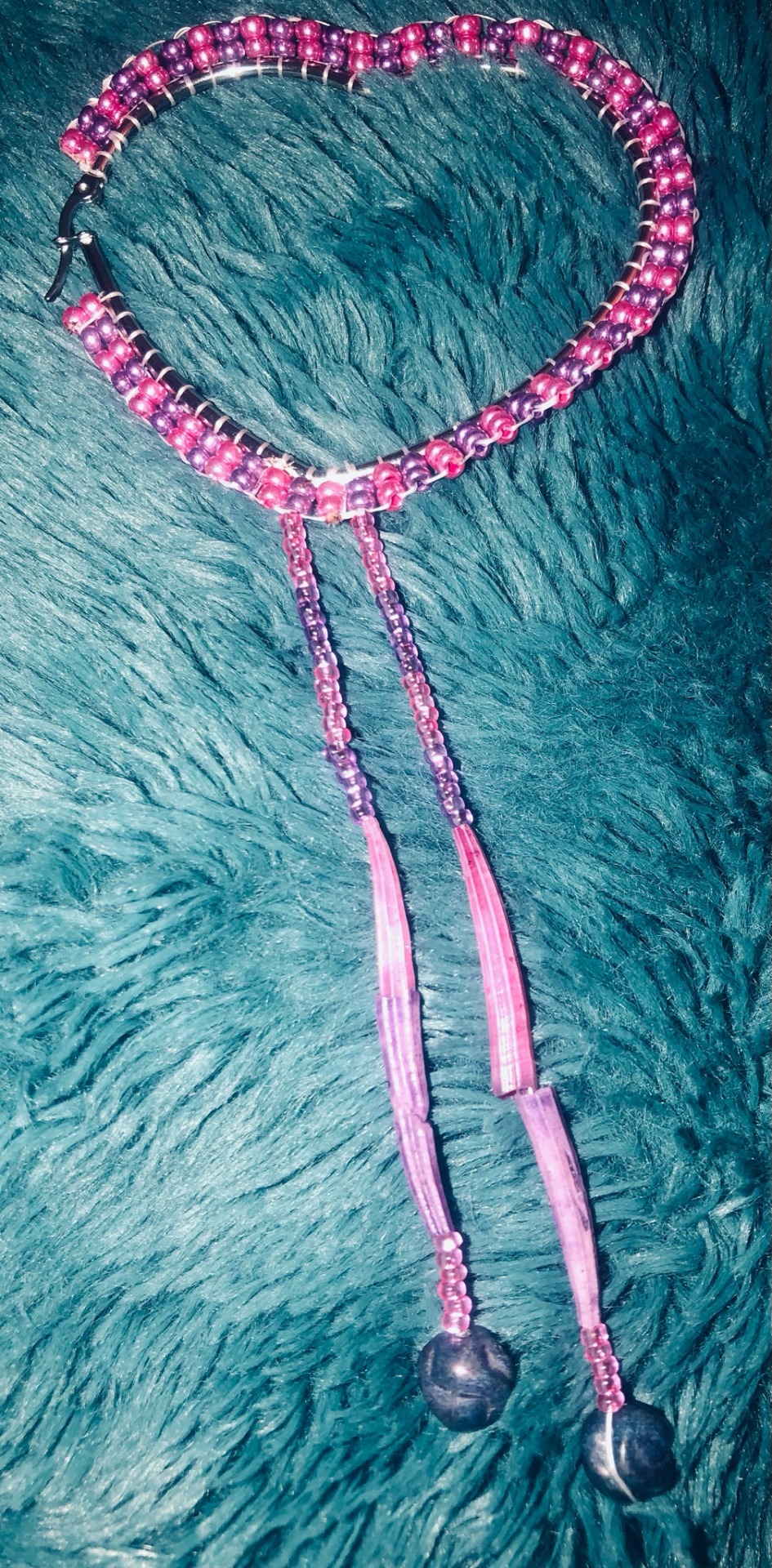
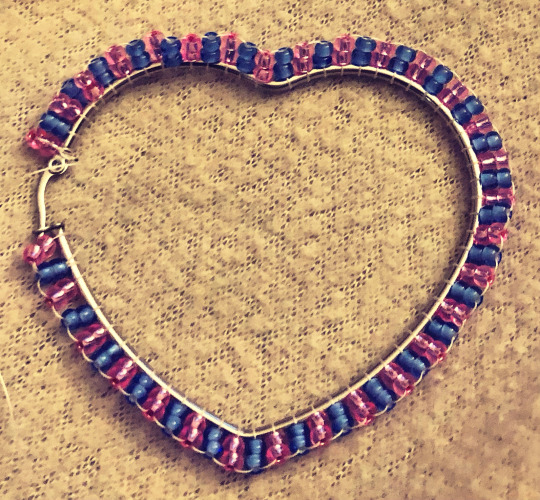


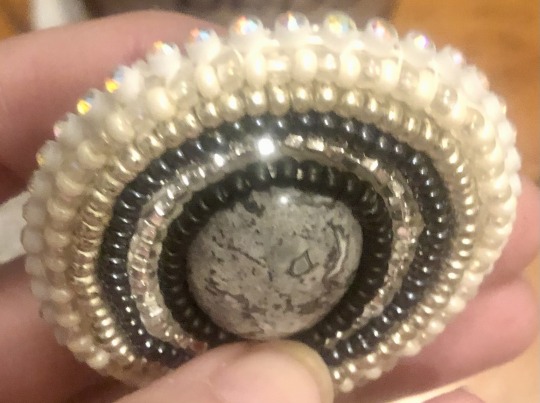


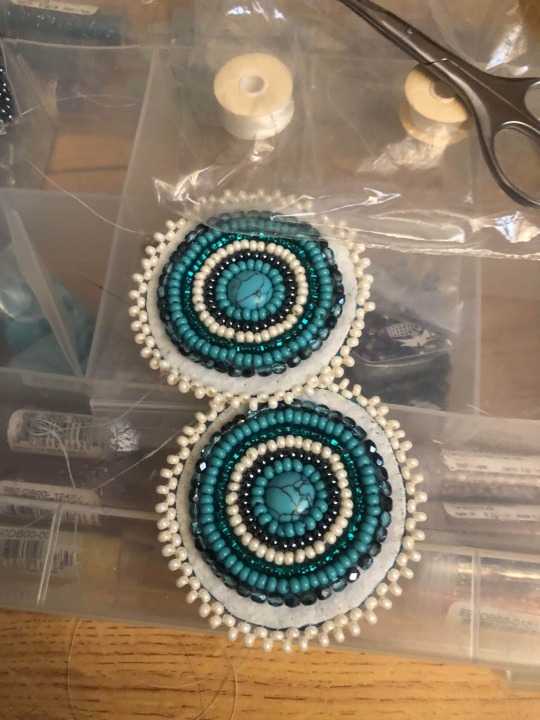


#canadianindigenousarts.com#indigenous art#indigenous culture#indigenous crafts#indigenous peoples day#indigenous peoples#anishinaabe#assiniboine#metis beading#metis#métis#métis nation#métis nation of ontario#Metis dot art#Algonquin#ottawa613#beaded jewelry#handmade jewelry#indigenous jewelry#art for art's sake#indigenous arts#indigenous handmade#indigenous#indigenous people#bear naked beading#bear naked beads#bear clan#reindeer clan#caribou clan#caribou tufting
7 notes
·
View notes
Text
Aayaase
Aayaase, sometimes referred to as Iyash or ᐋᔾᔮᐦᔥ (Aayaash; unpointed as ᐊᔾᔭᔥ), is an epic hero of the Cree tribe and the adjacent Ojibwe, Innu, and Algonquin communities.
From his family members' betrayal to the world fire, Aayaase is essentially the protagonist of a single heroic epic. The specifics of Aayaase's tale differ depending on the community, but without any fault of his own, he is always left behind by his father or stepfather on a desolate island. Aayaase was typically punished for shielding his mother from mistreatment. Aayaase has a series of adventures in which he kills or defeats strange monsters and then brings them back to life as good people or animals with the assistance of Old Lady Fox, who serves as his mentor. At the end, Aayaase locates his family once more, saves his mother, and uses fire to murder everyone—including the child of the second wife—who he later brings back to life as a duck, the world is consumed by fire and is also better off than it was before.
#Aayaase#adjacent Ojibwe#epic hero#Algonquin communities#Cree tribe#Ilyash#Cree#Ojibwe#Innu#Algonquin#mother#life#ᐋᔾᔮᐦᔥ#ᐊᔾᔭᔥ#fire#world#family#epic#brings#back
3 notes
·
View notes
Text

L. E. Racicot
Algonquin children, Grand lac Victoria, 1913
19 notes
·
View notes
Text
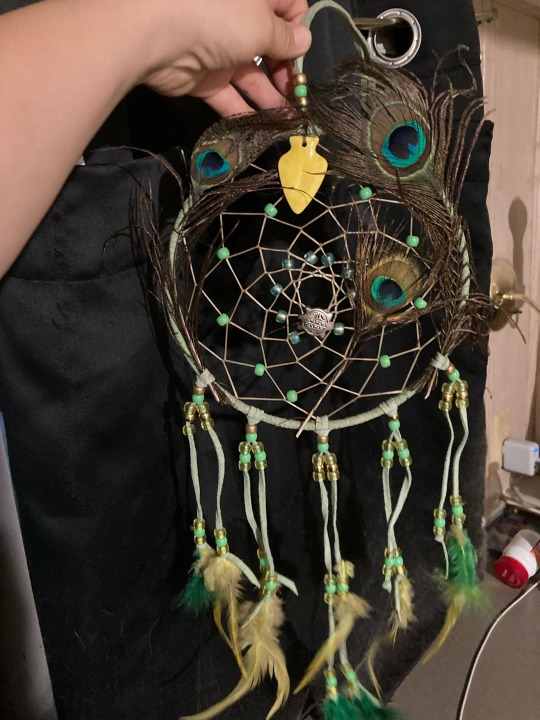

I don’t know if I ever mentioned it on this particular blog, but I’m half Native American. Earlier this week, my Uncle sent me a random gift for no particular reason, and in the center is a turtle charm. Cool coincidence since Ma and I are still working on watching our way through the 2003 series. Guess I’ll have sweet dreams with such a strong totem guarding my rest♥️🐢 😴
#tmnt 2003#peter laird#kevin eastman#my heritage#native pride#abenaki#algonquin#new england girl#turtle totem#turtle power
6 notes
·
View notes
Photo


Beaver Dam along Beaver Pond Trail
Photographs taken on June 19, 2023, at Algonquin Provincial Park, Ontario, Canada.
#wildlfowers of southern ontario#Beaver Pond Trail#beaver dam#algonquin provincial park#algonquin#ontario#canada
23 notes
·
View notes
Text

The moccasin is wearable history that has always remained in style regardless of the climate!🦌
❄️💜☀️
#history#moccasins#shoes#native americans#fashion#indigenous history#canada#algonquin#united states#traditional fashion#canadian history#north america#fashion lover#native american culture#stylish#soft girl#clothing#indigenous people#fashion history#usa#colonial america#quebec#american history#cute shoes#historical clothing#nickys facts
16 notes
·
View notes